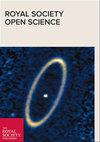Individual quality and environmental factors interact to shape reproduction and survival in a resident bird of prey.
IF 2.9
3区 综合性期刊
Q1 MULTIDISCIPLINARY SCIENCES
引用次数: 0
Abstract
Investigating among-individual differences in reproductive success and survival is essential for understanding eco-evolutionary processes. We used 5 years of demographic data from 556 breeding barn owls (Tyto alba) to estimate associations between intrinsic and extrinsic covariates on survival and reproduction throughout the annual cycle. As males and females have distinct roles in reproduction, environmental conditions and individual quality may be differentially linked to their fitness at different time points. Males breeding early and inhabiting prey-rich areas experienced higher reproductive success but faced greater reproductive costs. Indeed, the number of offspring a male cared for was negatively associated with his body condition and survival. However, our results indicate that these influences can be mitigated in males experiencing favourable post-breeding environmental conditions. For female owls, early breeding and high food availability during the breeding period were linked with increased reproductive success. Prey availability during incubation and higher reproductive output were associated with higher survival into the next breeding period in females. Unlike males, females did not exhibit obvious trade-offs between reproductive success and survival. Our research demonstrates trade-offs between fecundity and survival, and that females paired with males able to provide sufficient food experience higher survival and reproduction.个体素质和环境因素相互作用,影响了留鸟的繁殖和生存。
调查个体间繁殖成功率和存活率的差异对于了解生态进化过程至关重要。我们利用 556 只繁殖期谷仓鸮(Tyto alba)5 年的人口统计学数据,估算了内在和外在协变量在整个年周期中对存活率和繁殖率的影响。由于雄性和雌性在繁殖中扮演着不同的角色,环境条件和个体质量可能在不同的时间点与它们的健康状况有着不同的联系。雄性繁殖较早且栖息在猎物丰富的地区,其繁殖成功率较高,但面临的繁殖成本也较高。事实上,雄性照顾的后代数量与其身体状况和存活率呈负相关。然而,我们的研究结果表明,如果雄性在繁殖后的环境条件有利,这些影响可以得到缓解。对于雌性猫头鹰来说,早繁殖和繁殖期间食物供应充足与繁殖成功率的提高有关。雌性猫头鹰在孵化期间的猎物供应量和较高的繁殖产量与较高的下一个繁殖期存活率有关。与雄性不同,雌性在繁殖成功率和存活率之间没有表现出明显的权衡。我们的研究证明了繁殖力和存活率之间的权衡,与能够提供充足食物的雄性配对的雌性存活率和繁殖率更高。
本文章由计算机程序翻译,如有差异,请以英文原文为准。
求助全文
约1分钟内获得全文
求助全文
来源期刊

Royal Society Open Science
Multidisciplinary-Multidisciplinary
CiteScore
6.00
自引率
0.00%
发文量
508
审稿时长
14 weeks
期刊介绍:
Royal Society Open Science is a new open journal publishing high-quality original research across the entire range of science on the basis of objective peer-review.
The journal covers the entire range of science and mathematics and will allow the Society to publish all the high-quality work it receives without the usual restrictions on scope, length or impact.
 求助内容:
求助内容: 应助结果提醒方式:
应助结果提醒方式:


